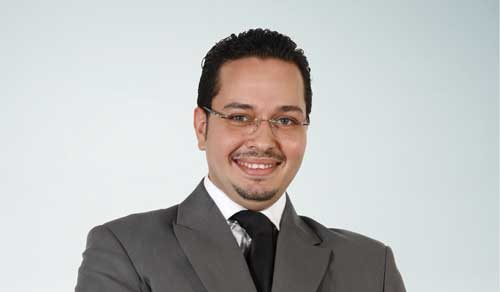The life insurance markets of the MENA (Middle East-North Africa) region are undergoing several shifts in the wake the global financial crisis, the Arab Spring, and lower oil prices. Recovery, although slow, has been steady, and two markets in particular – Saudi Arabia and Egypt – are emerging as vibrant and innovative both for traditional and takaful (Islamic) products.
Saudi Arabia in 2016 enacted its Vision 2030 program, with the goal of reducing the country’s economic dependence on oil and cultivating alternative sources of revenue. This is enabling the development of several non-oil aspects of the Saudi economy, including the life insurance market.
Already, clear changes have emerged in customer attitudes about life insurance, both in protection and saving products. One of the most noticeable trends has been seen in retirement-savings products, especially among middle-aged individuals. Over the past year, sales growth for these products has exceeded all expectations, especially among the growing population of educated middle-aged Saudis, who are now focusing on saving more at earlier ages in order to minimize dependence on the government’s pension scheme.
Vision 2030’s inclusion of more rights for women has thus far had the well-publicized outcome of October 2017’s lifting of the female driving ban. Saudi insurers are leveraging these greater rights as well to develop the sort of female-specific health and protection products already popular in the Asia-Pacific region.
The most visible innovation in Saudi Arabia’s insurance market is occurring in its benefits market, specifically for small to medium enterprises (SMEs). Traditionally, the relatively small size of these companies has meant brokers and benefit designers cannot design cost-effective customized plans for them. Recently, Saudi insurers have developed over-the-counter group employee benefit products. These plans have no underwriting requirements, provide a maximum life cover of SAR 100,000, and have available a range of pre-priced benefit packages that are based on the number of employees, the amount of cover, and the types of benefits offered.
Egypt has also seen considerable evolutionary development in its economy and its life insurance market over the past five years. These are, of course, in part due to the aftereffects of Arab Spring, which first struck Egypt in 2011, on its government and economy. In addition, two recent occurrences – one of which was wholly unexpected – have substantially changed Egypt’s economic picture.
The first, in 2015, was the discovery of what may be the world’s largest natural gas field, in the Mediterranean Sea just off Egypt’s coast. This new field, which just launched production in December 2017, is materially strengthening Egypt’s energy self-sufficiency and could soon allow it to become a gas exporter. The second, in late 2016, was the government’s decision to allow Egypt’s currency, previously pegged to the U.S. dollar, to float in hopes that a lower value might attract foreign investment and stimulate economic growth. Both of these recent events have already improved Egypt’s economy, which is currently expanding at its fastest pace in seven years, with GDP growth far exceeding World Bank expectations, and non-oil exports and tourism are growing at double-digit rates.
On the life insurance side, Egypt’s greater economic stability is enabling growth and innovation in both distribution and products. On the distribution side, the dropping data usage prices over the past few years has spurred marked growth in Egyptian mobile ownership, to the point that Egypt today is the largest mobile phone market in Africa. This surge sparked the issuance in 2015 of regulations for online insurance sales. Since then, insurers have been designing simplified products for online and mobile channels such as male cancer, female cancer, and term with return of premium – and more are in the pipeline.
Businesses and investors are regaining their trust in the nation’s economy, which is stimulating more interest by businesses in investing in operations, thereby creating more demand for business loans and key person insurance products. The currency’s devaluation due to the float has also sparked insurance product innovation. A new unit linked savings product bases its investment units upon the price of precious metals (primarily gold) rather than the standard fund units, which makes the customer investment more stable against currency fluctuations. The product also gives the policyholders the option to withdraw their savings in cash or in the actual precious metal.
Egyptian interest in the microinsurance market has also risen in recent years. The first laws regulating it emerged in late 2016, and in March 2018 an innovative microinsurance product was launched. The product is a bank certificate of deposit (CD) bundled with protection that automatically covers natural and accidental death, and where premiums are paid by the CD’s accumulated interest. The face value of the protection product is relatively small (EGP 10,000 for natural death and EGP 50,000 for accidental death), but given the population of Egypt, which is approximately 103 million, sales have the potential to be high.
The German philosopher Friedrich Nietzsche once said "That which does not kill us, makes us stronger." For Egypt, if the events since the Arab Spring are any indication, he was absolutely right. Egypt’s sizable economic changes are spurring innovative vigor in its life insurance markets. Saudi Arabia’s decision to develop a new economic and cultural vision for itself, is also generating creative ideas in its life insurance market. The future for life insurance in both countries looks very bright.



